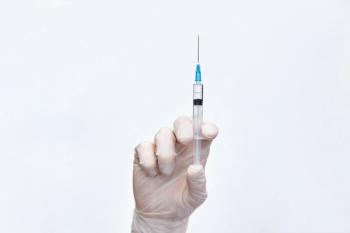
Hypertension Interventions Have Limited Success in Rural Black Populations
Hypertension remains a significant problem in areas of the rural South.
A major study of hypertension interventions among Black patients in the rural South shows more work is needed to better understand how to treat the condition in this patient group. The study, published today in JAMA Internal Medicine, found neither of the 2 interventions attempted led to statistically significant improvement over usual care, nor did a combination of the 2 interventions.1
The study authors said hypertension is a major problem in areas of the rural South.
“In the rural Southeastern US, an economically depressed area with long-standing primary care shortages, more than one-half of Black adults have hypertension,” they wrote. “Distances and high fuel costs make regular attendance at medical office visits difficult.”
Finding better ways to
Peer coaching involved training community members to deliver 8 sessions of self-management coaching for patients that focused on topics like diet, physical activity, medication adherence, and self-monitoring of blood pressure (BP). After 8 initial weekly sessions, coaches maintained monthly contact with patients for a year.
The second intervention was practice facilitation, in which certified facilitators helped health care practices implement at least 4 quality improvement projects: tracking medical data, team-based care, care standardization, and self-management support. Facilitators tracked practices’ progress monthly to see how well the practices were implementing the programs.
Sixty-nine practices were enrolled in the study, and they were randomized to utilize peer coaching, practice facilitation, both, or enhanced usual care alone. In the study, enhanced usual care encompassed providing patients with home BP monitoring machines and access to an online education system, along with other educational materials. All practices received enhanced usual care, but the group that received only that intervention was treated as the control group.
READ MORE:
In total, 1209 patients participated in the study. The mean age was 58 years, and 748 were women. After 12 months, the investigators found vs enhanced usual care alone, neither peer coaching (OR, 1.30; 95% CI, 0.83-2.04) nor practice facilitation (OR 0.94; 95% CI 0.58-1.52) led to improved BP control, nor did the combination of the 2 interventions (OR 1.02; 95% CI, 0.64-1.64).
In a preplanned subgroup analysis of patients younger than 60 years, participants assigned to peer coaching or peer coaching and practice facilitation experienced a 5 mm Hg greater
The study also found that practices that participated in the practice facilitation program reported a practice-wide increase in patients with BP control from 54% to 61%, although that result was not echoed in the results for the trial participants specifically.
“Although trial participants demonstrated no benefit from practice facilitation, estimates of practice-level BP control suggested substantial gains throughout the year-long intervention,” the study authors wrote.
They added that only 60% of patients in the peer coaching intervention completed all sessions and only 38% of patients had medication intensification during the 12 months of the intervention.
The authors said there were positive outcomes from the trial. They noted that some partnering organizations had feared that trying to tackle 4 quality improvement projects in a single year might not be feasible.
“This randomized clinical trial demonstrates that this goal was not only feasible, it also may have resulted in clinically important improvements in practice-level control, even in practices with substantial resource constraints like those engaged in this study,” they added.
An accompanying editorial reiterated that the study was important, even though it did not find that the interventions were effective.2
“One of the main reasons for publishing this trial is to point out that blood pressure control is difficult, especially among rural minoritized persons who may face diminished access to care, adverse social determinants of health, and other competing obligations that trump a focus on blood pressure,” they wrote. “What should we do? We are not entirely sure.”
References
Safford MM, Cummings DM, Halladay JR, et al. Practice facilitation and peer coaching for uncontrolled hypertension among Black individuals: a randomized clinical trial. JAMA Intern Med. Published online March 18, 2024. doi:10.1001/jamainternmed.2024.0047
Grady D, Mody L. Hypertension interventions for African American patients in the rural South. JAMA Intern Med. Published online March 18, 2024. doi:10.1001/jamainternmed.2024.0059
Newsletter
Pharmacy practice is always changing. Stay ahead of the curve with the Drug Topics newsletter and get the latest drug information, industry trends, and patient care tips.




